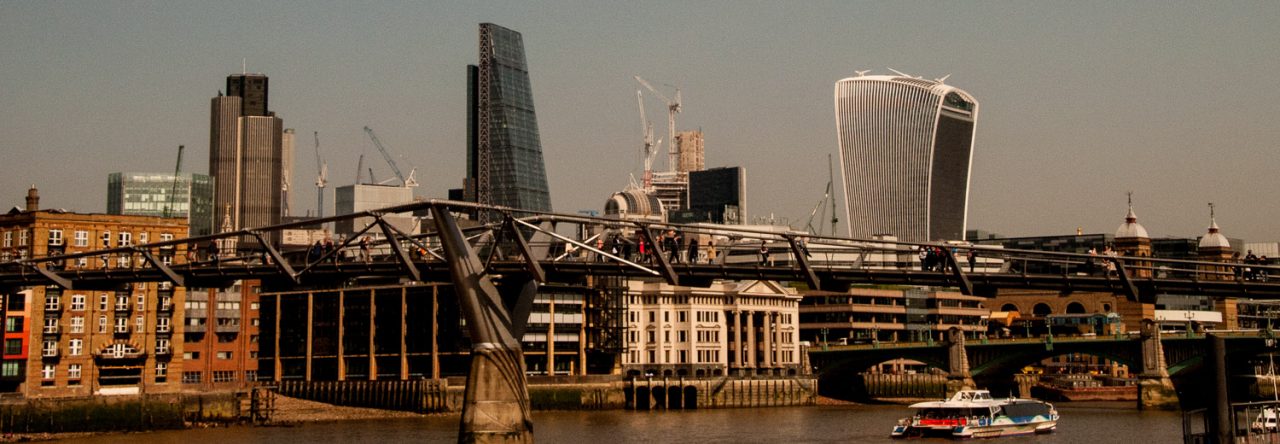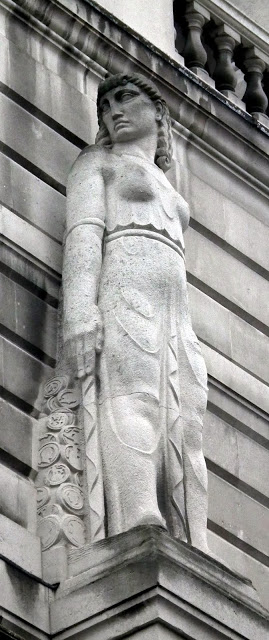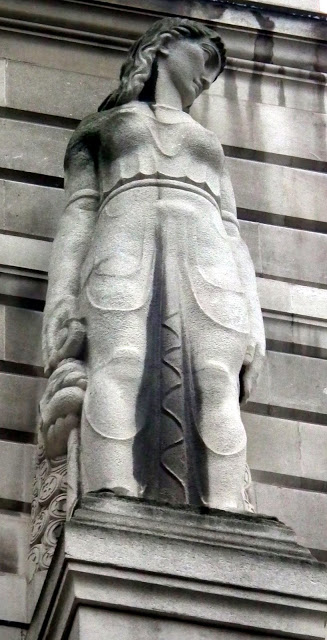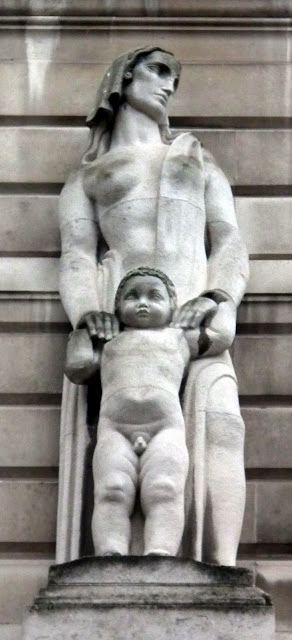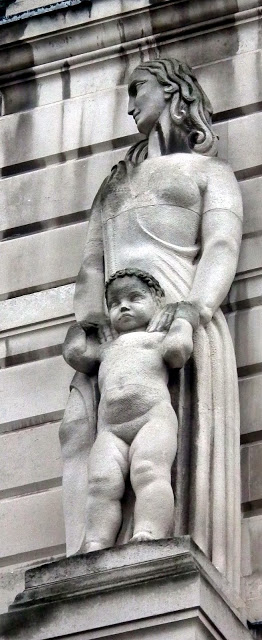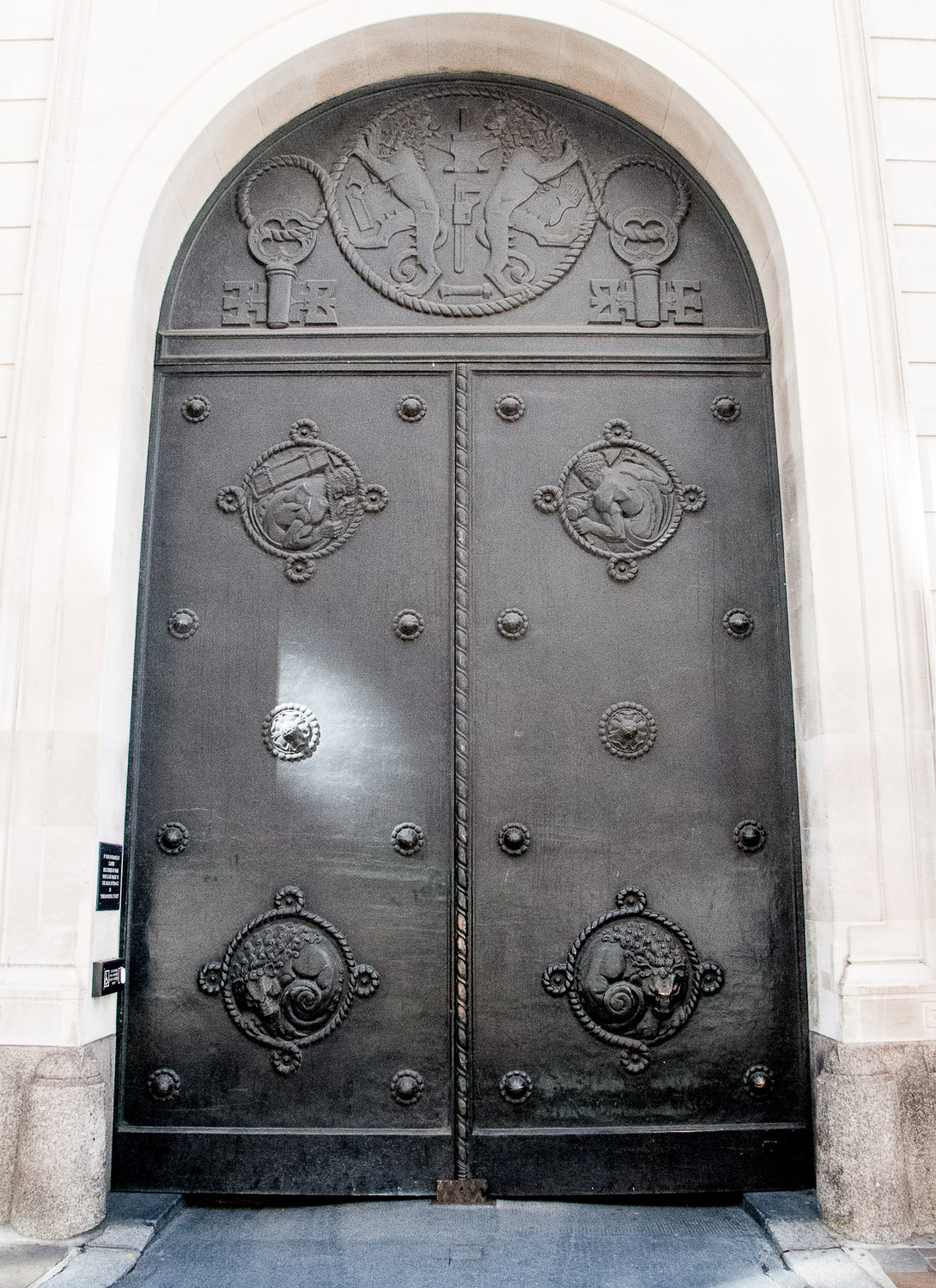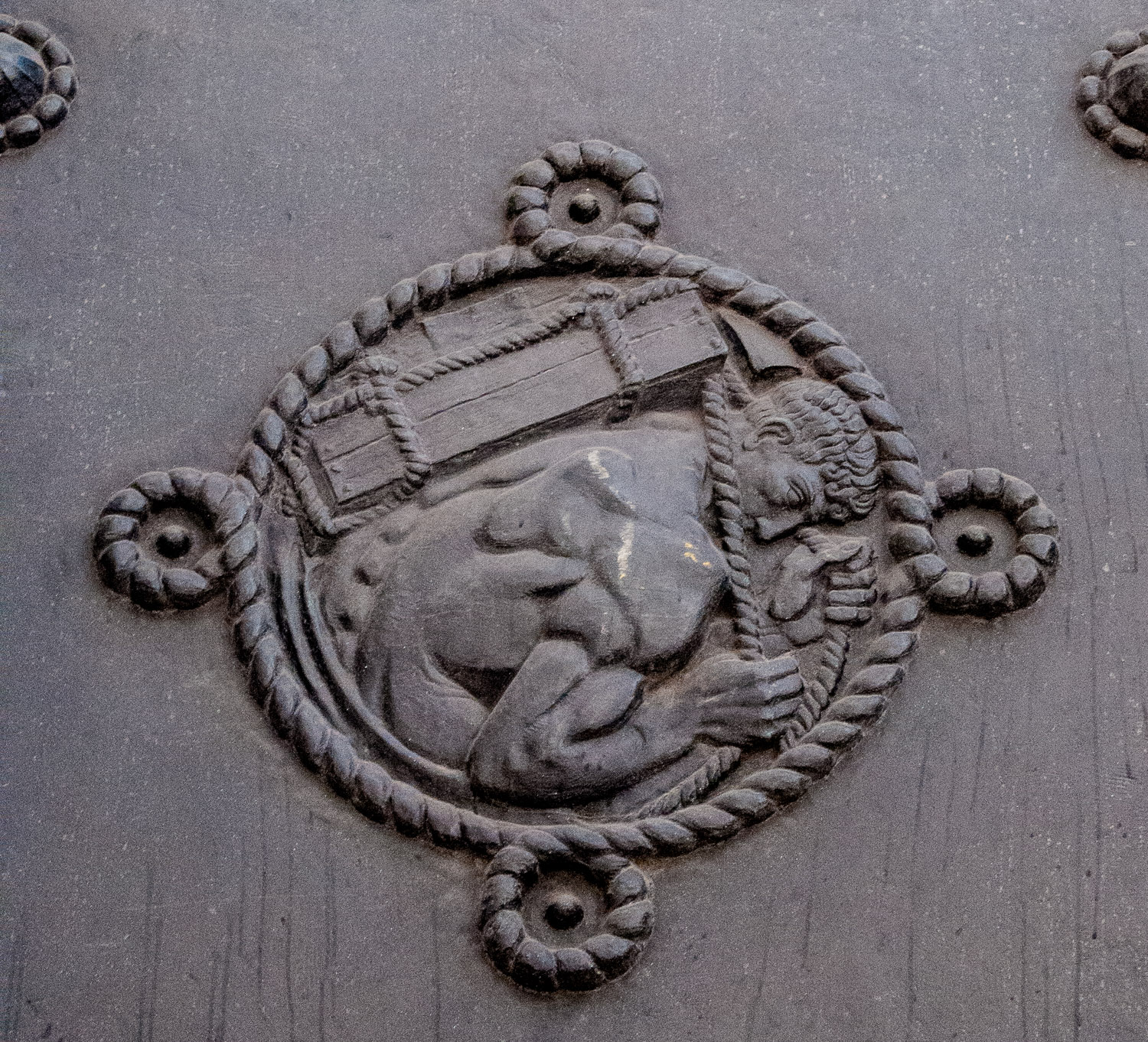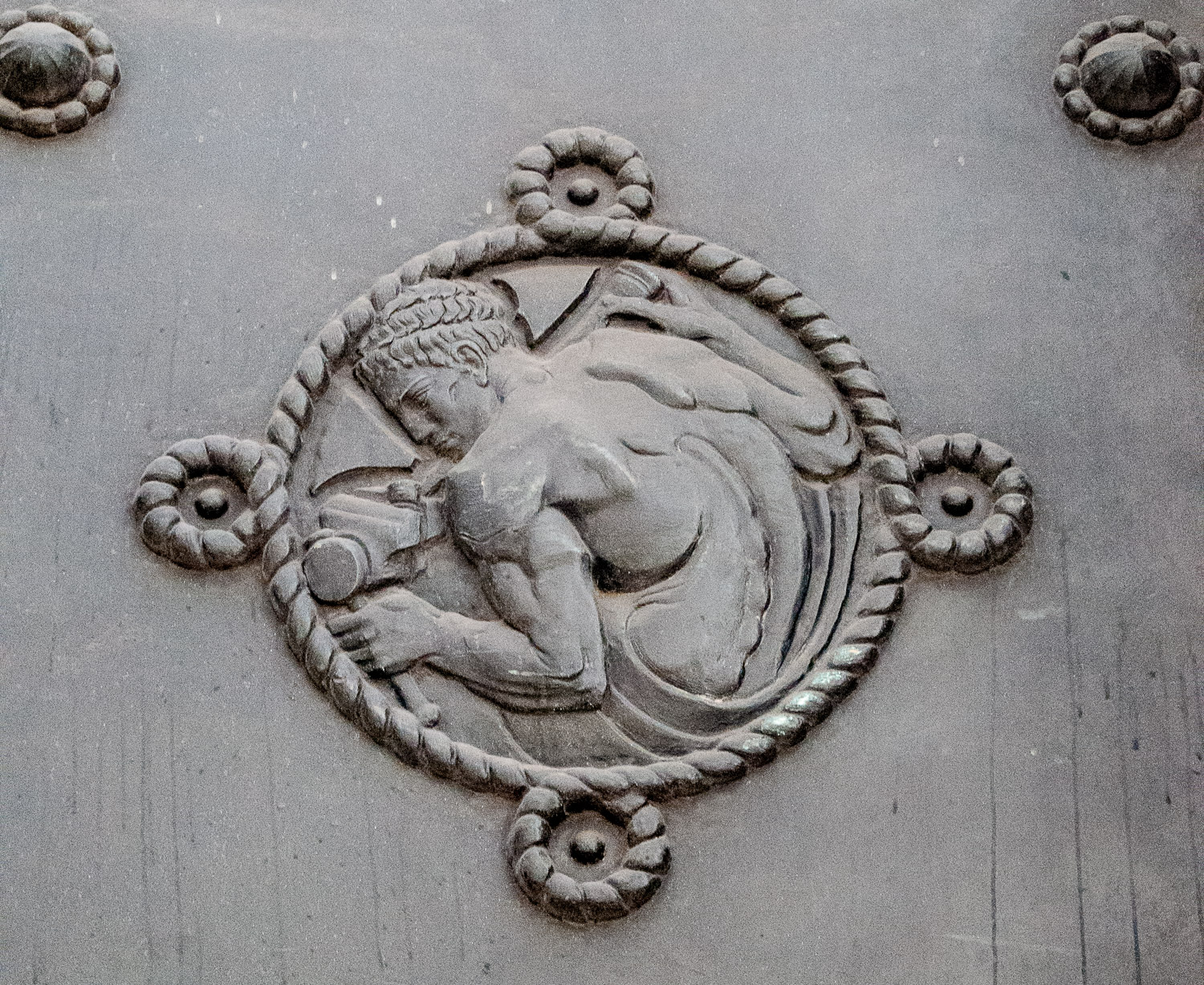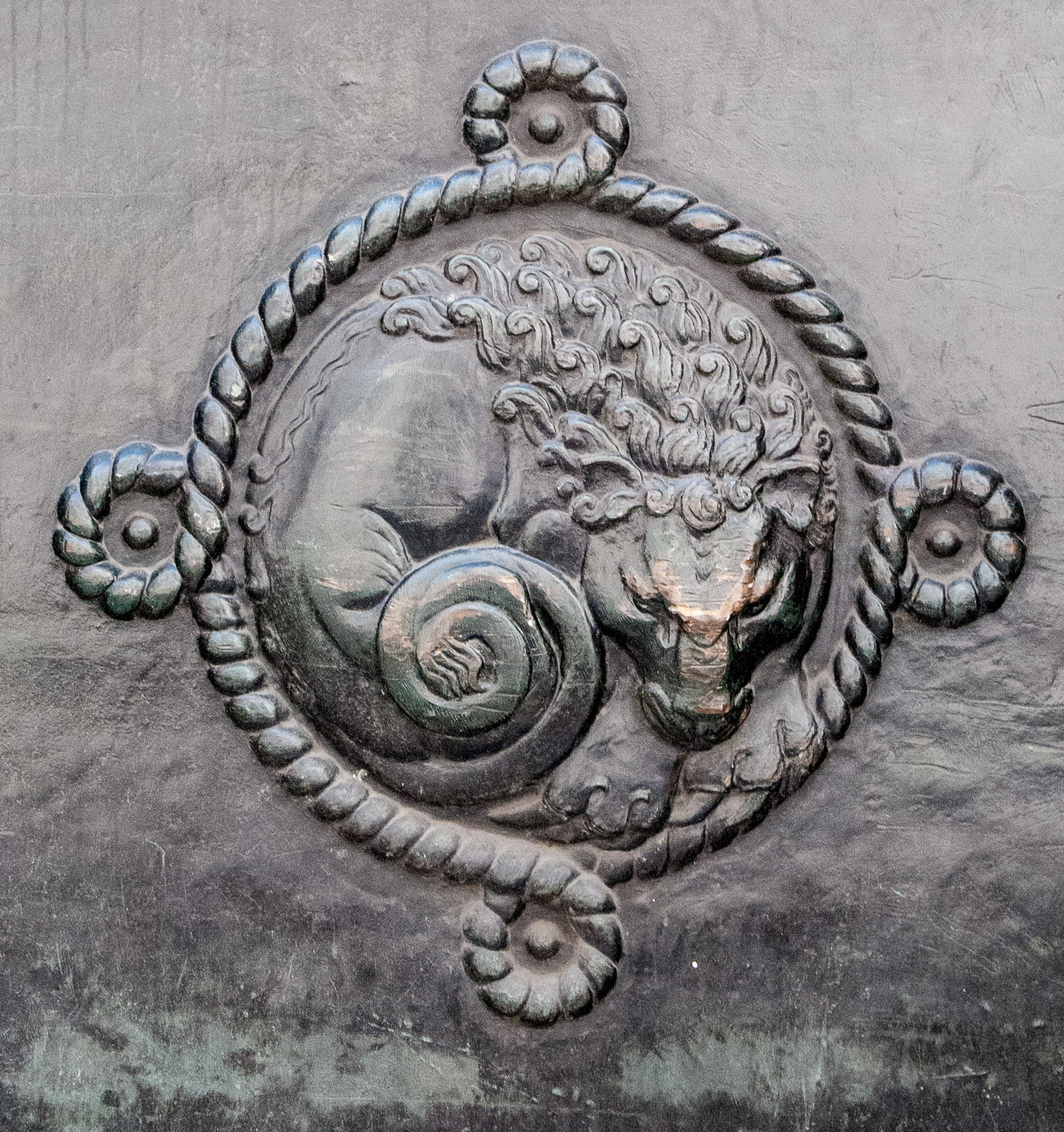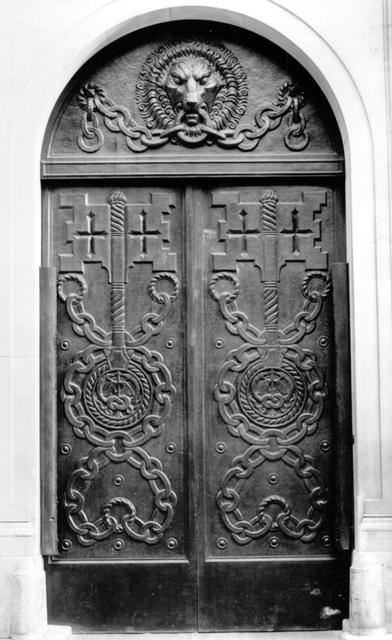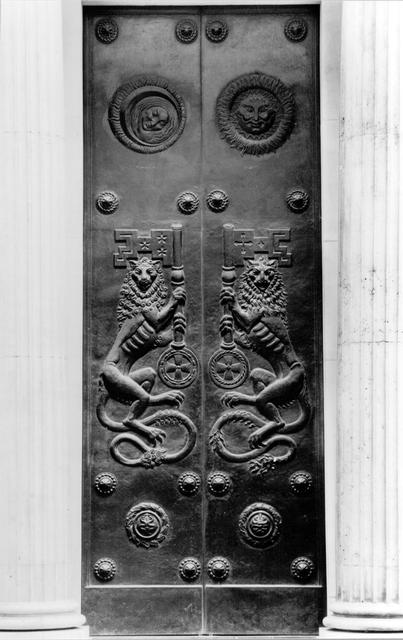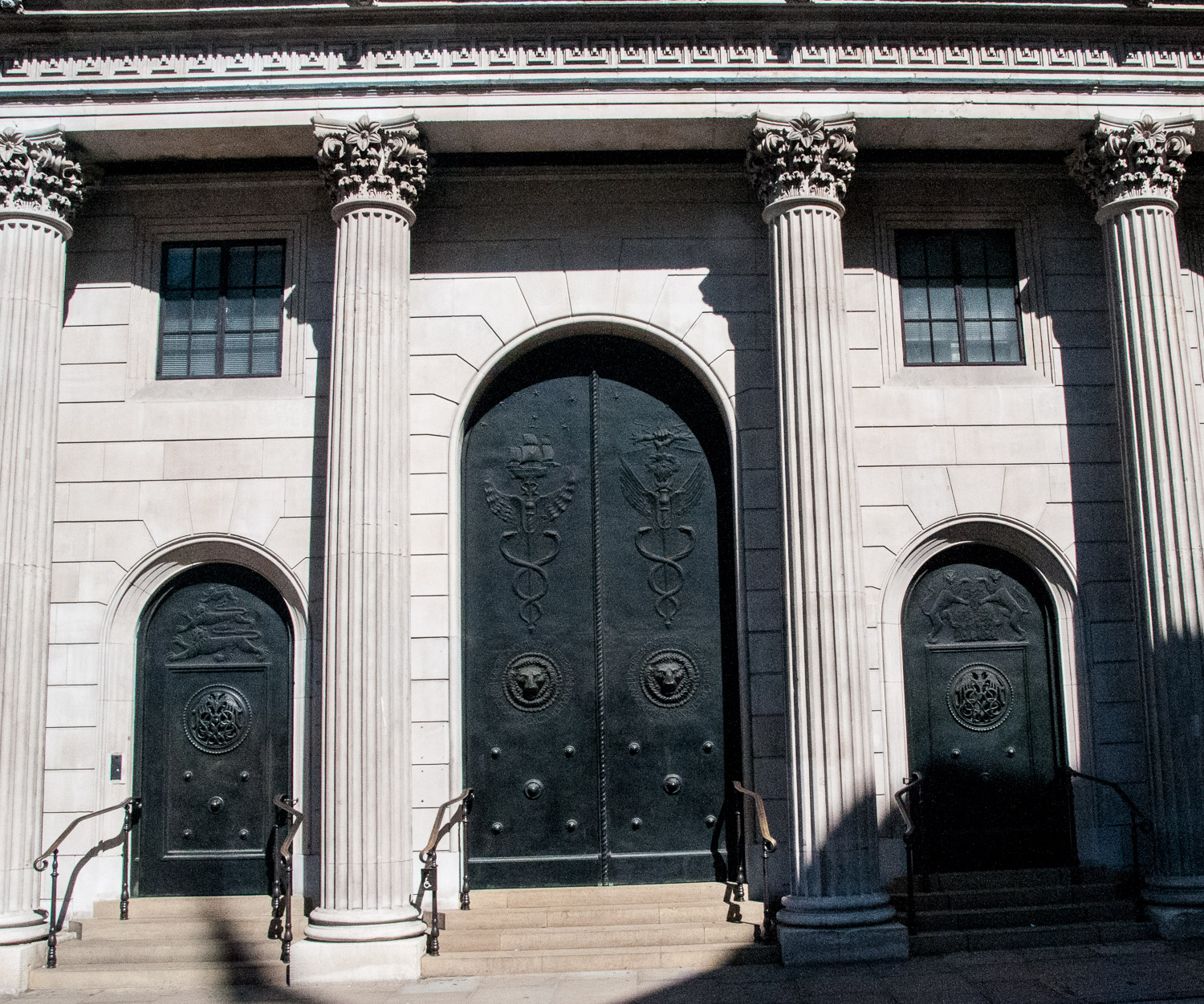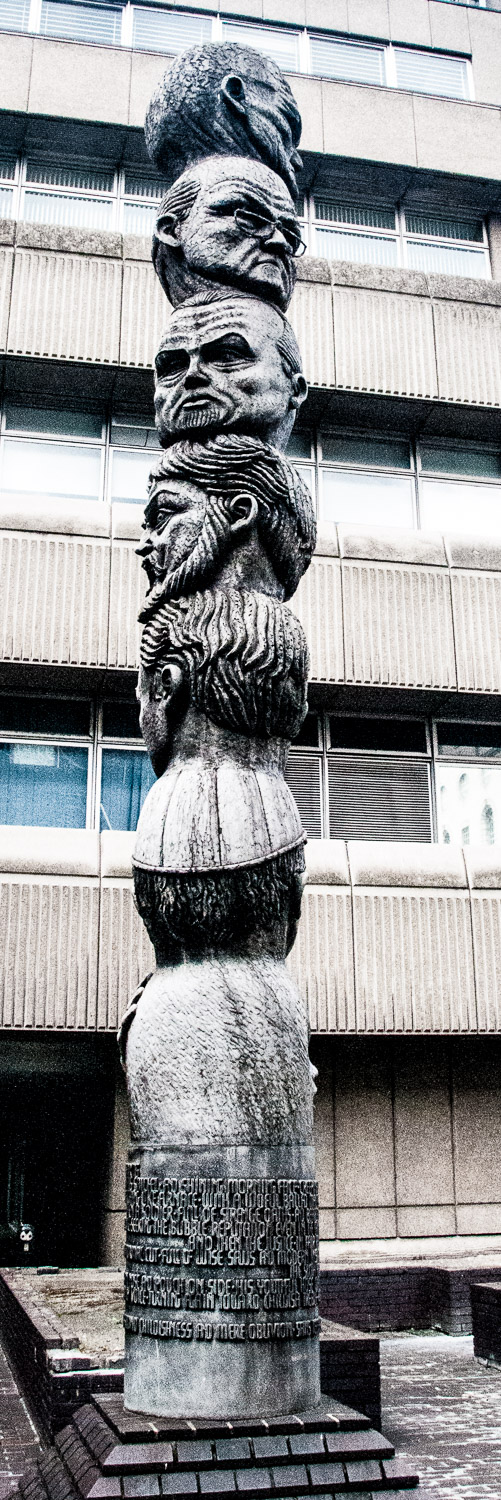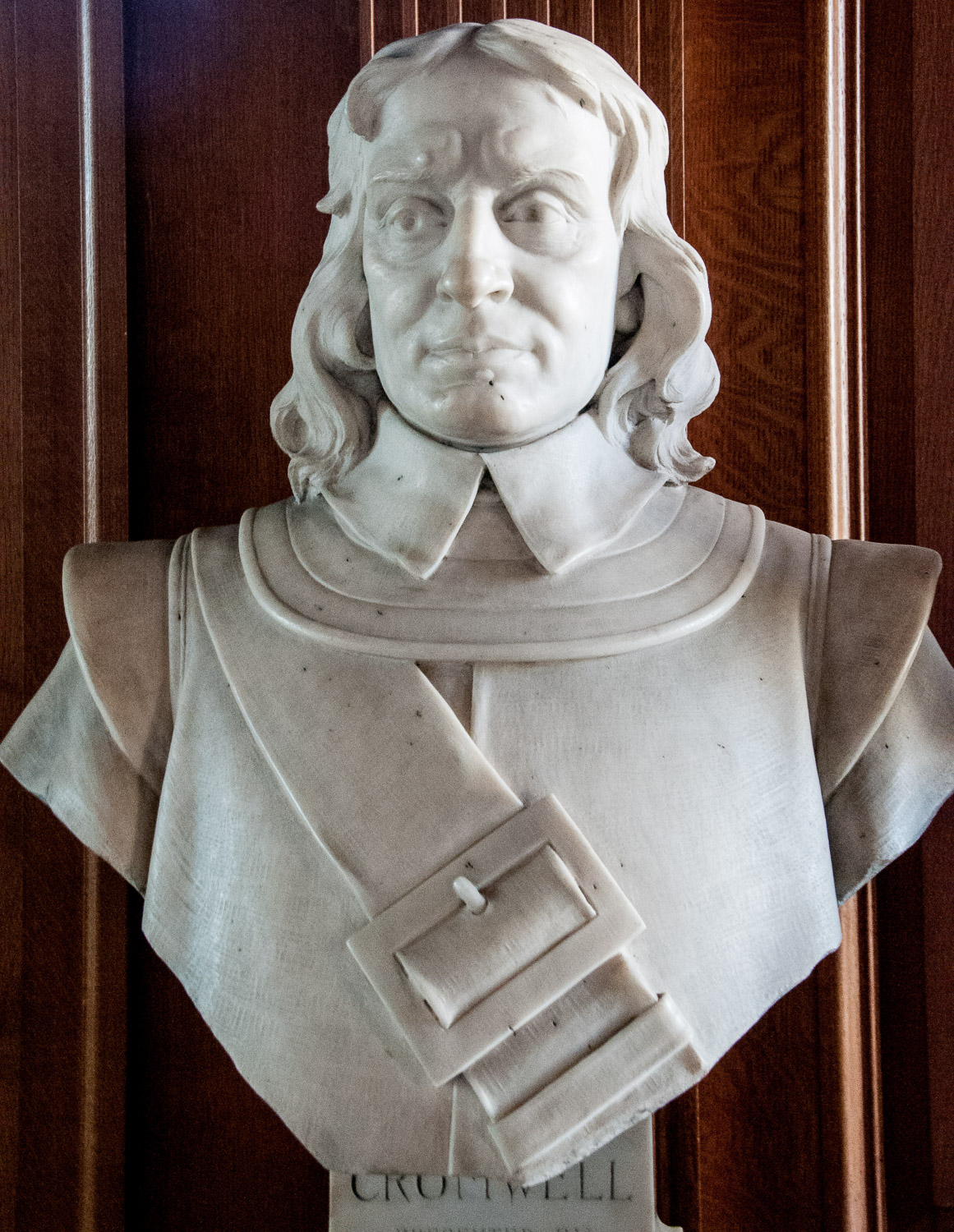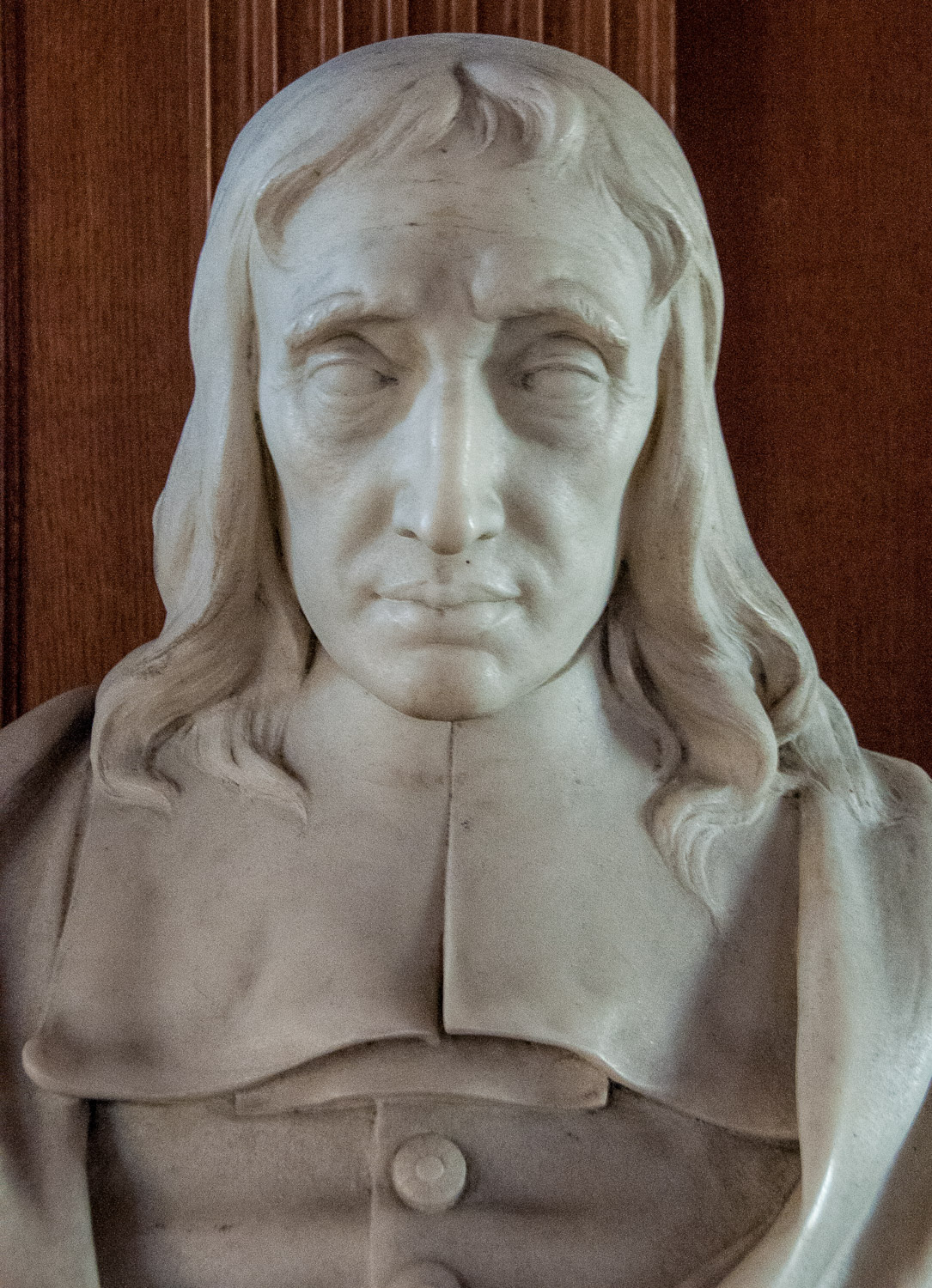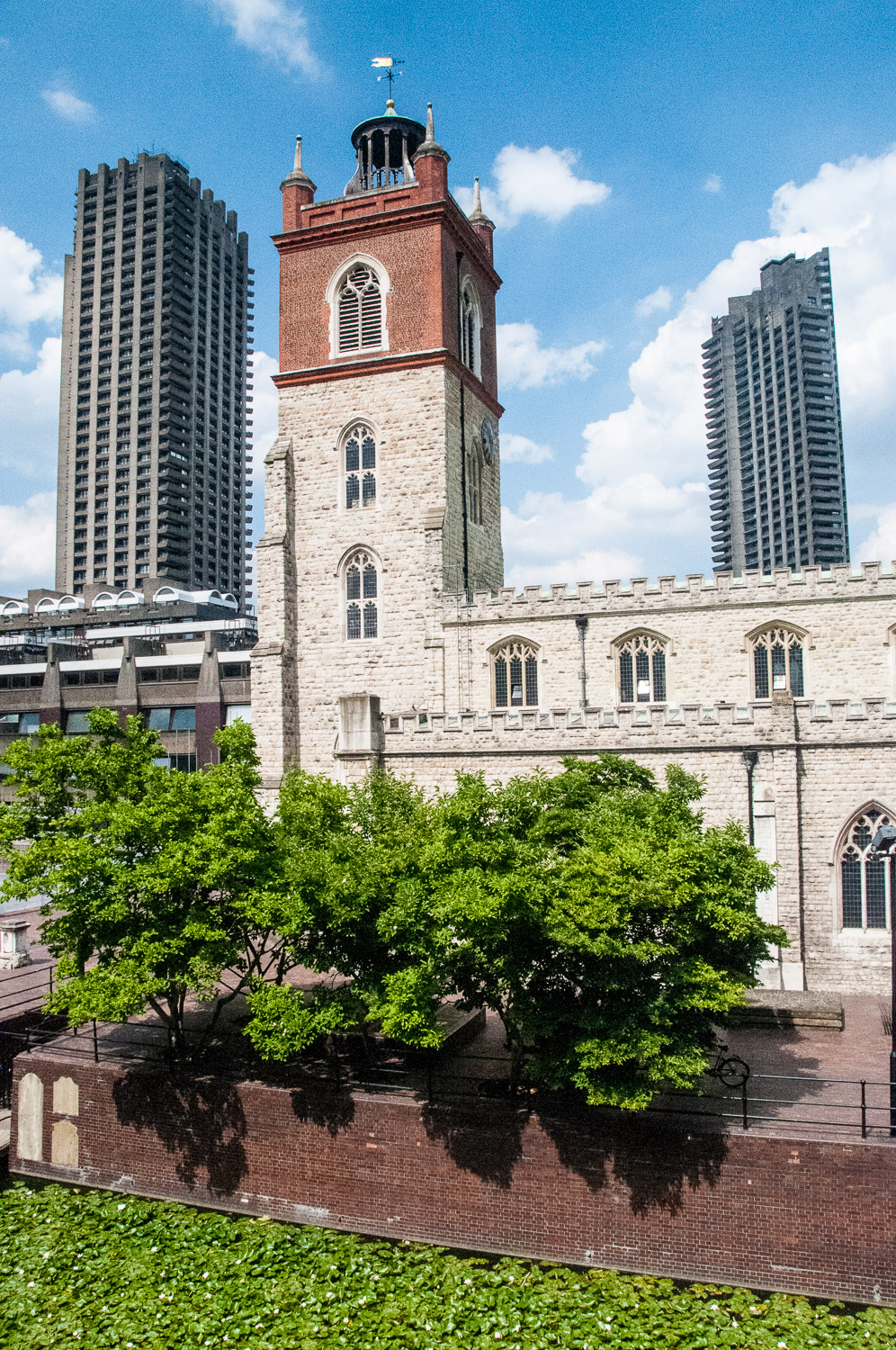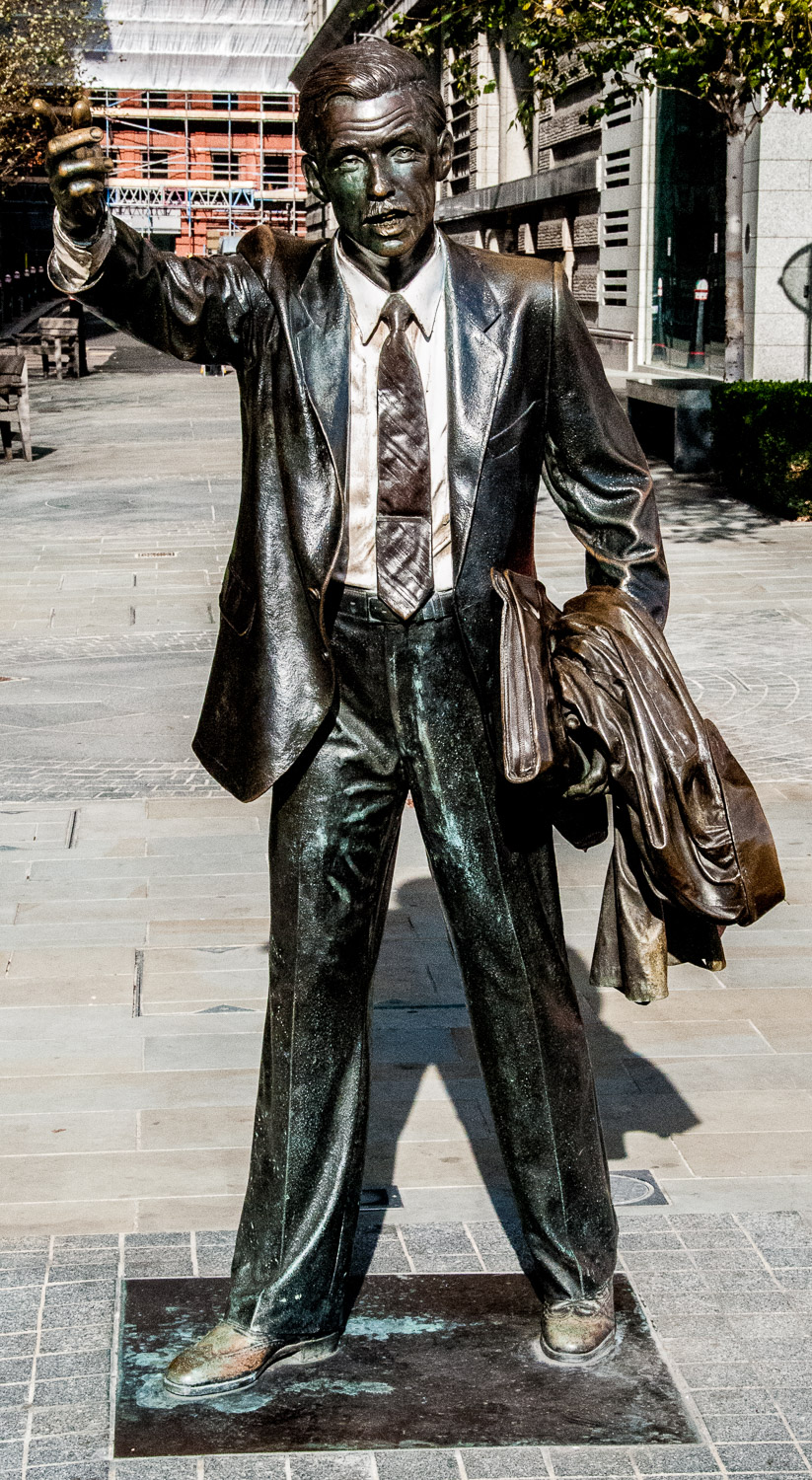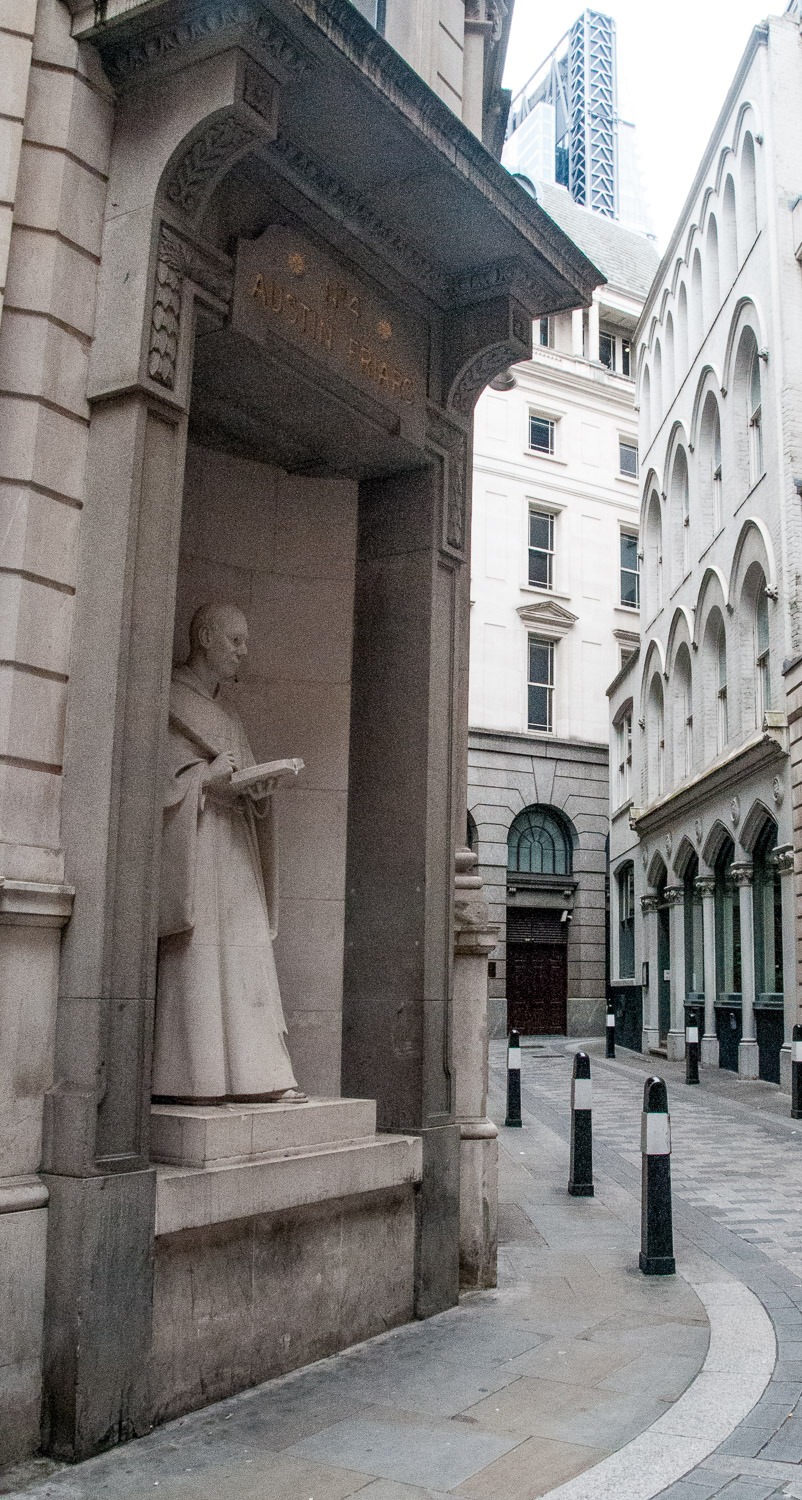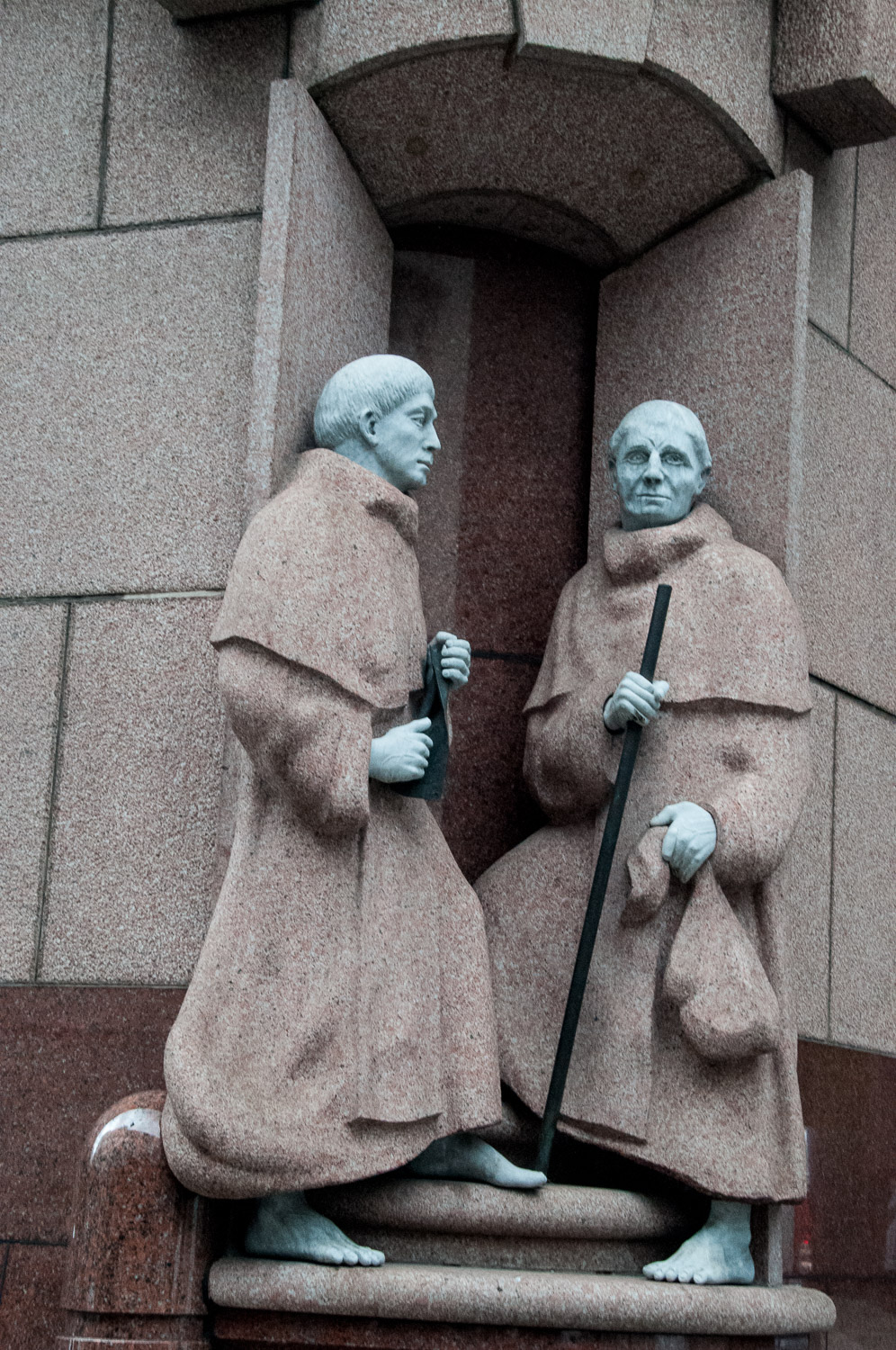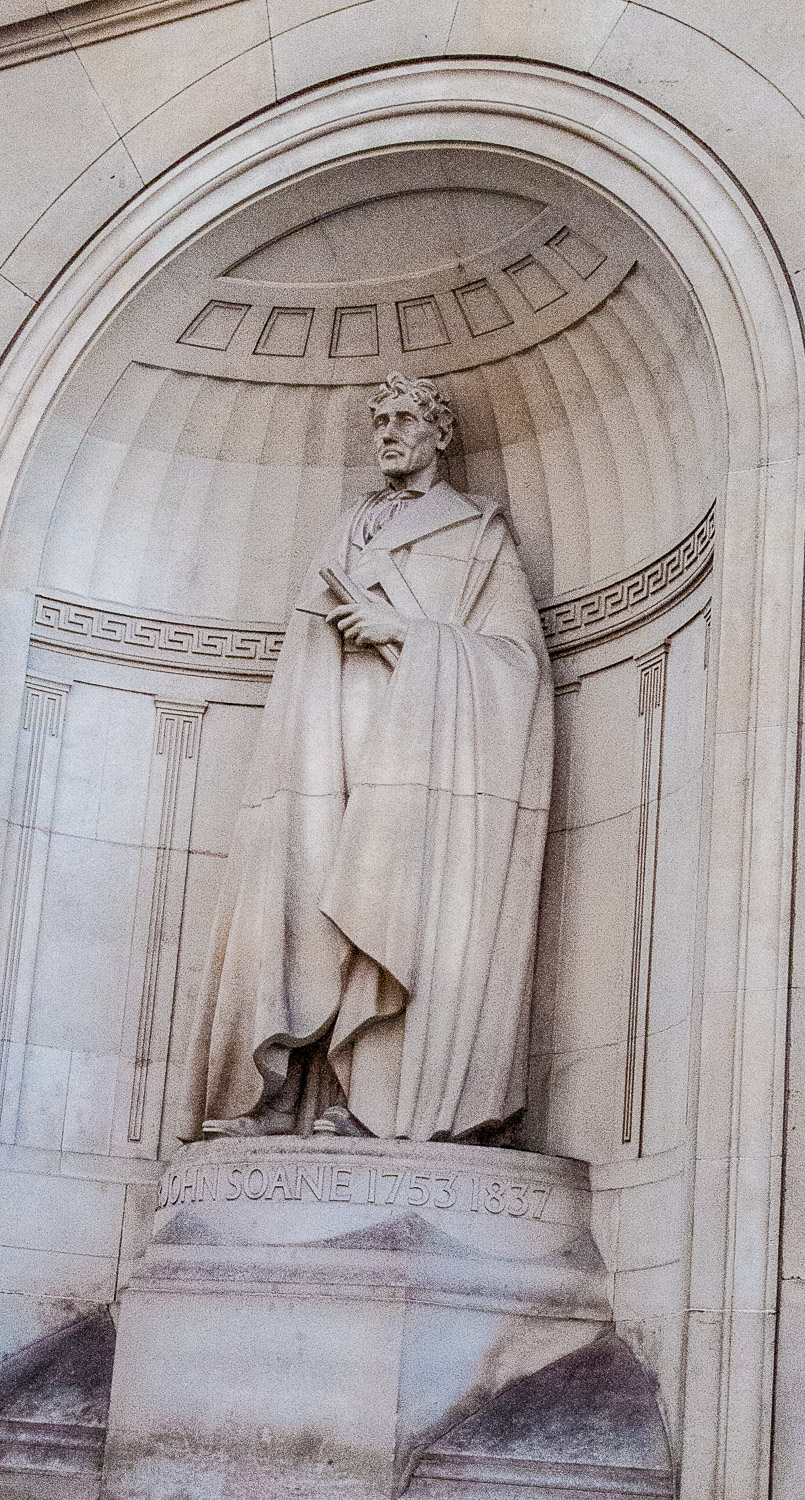If you haven’t yet visited the Guildhall Art Gallery I do strongly recommend it (EC2V 5AE). Established in 1886 it contains works dating from 1670 to the present. A visitor described it as ‘free and fabulous’ and I wholeheartedly agree.
Here is one of my favourite pictures, William Logsdail’s painting entitled The Ninth of November 1888 …
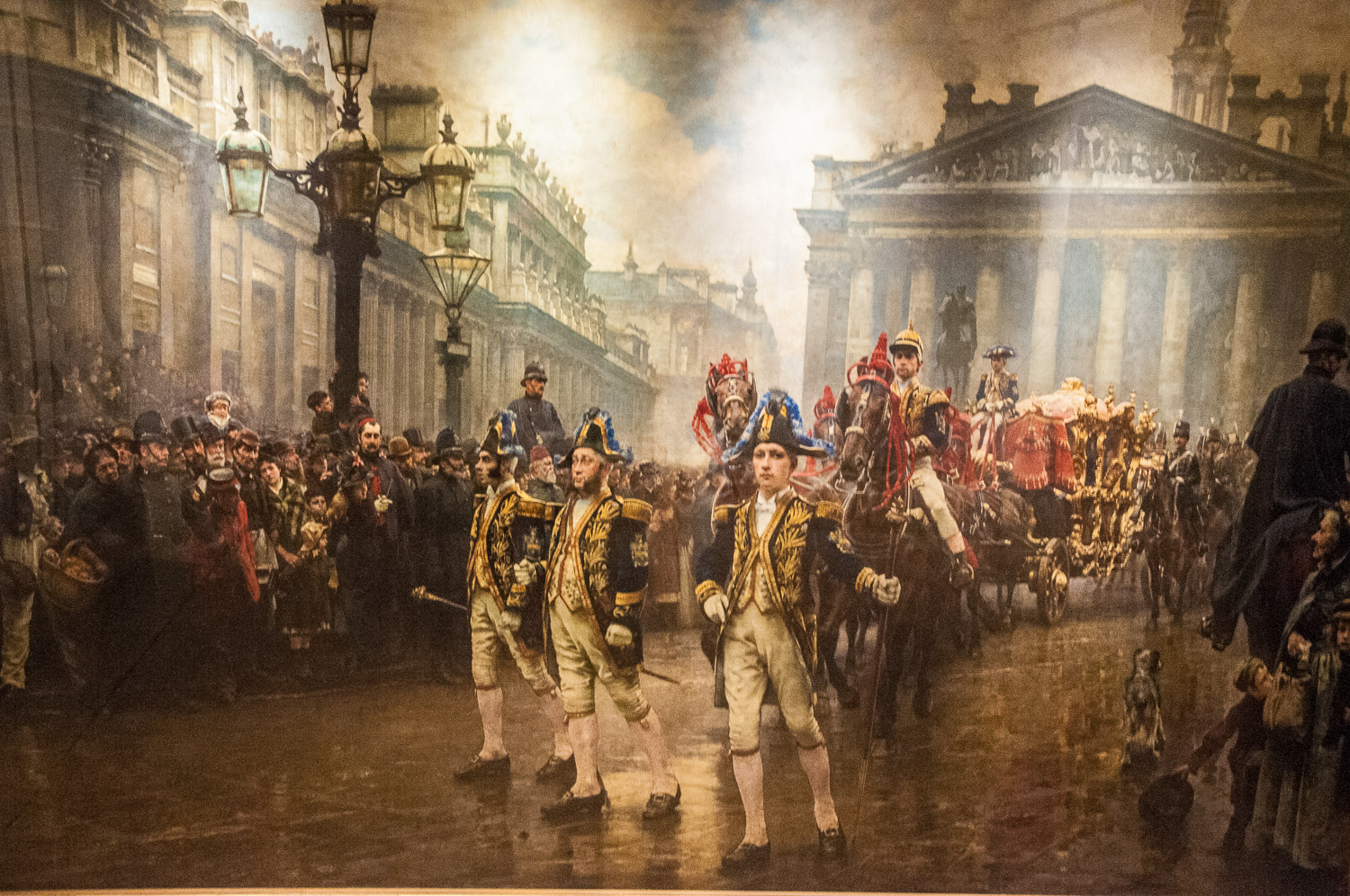
It is, of course, the Lord Mayor’s procession, but in this picture he is nowhere to be seen and the artist has concentrated on the liveried beadles (who he actually painted in his studio)…
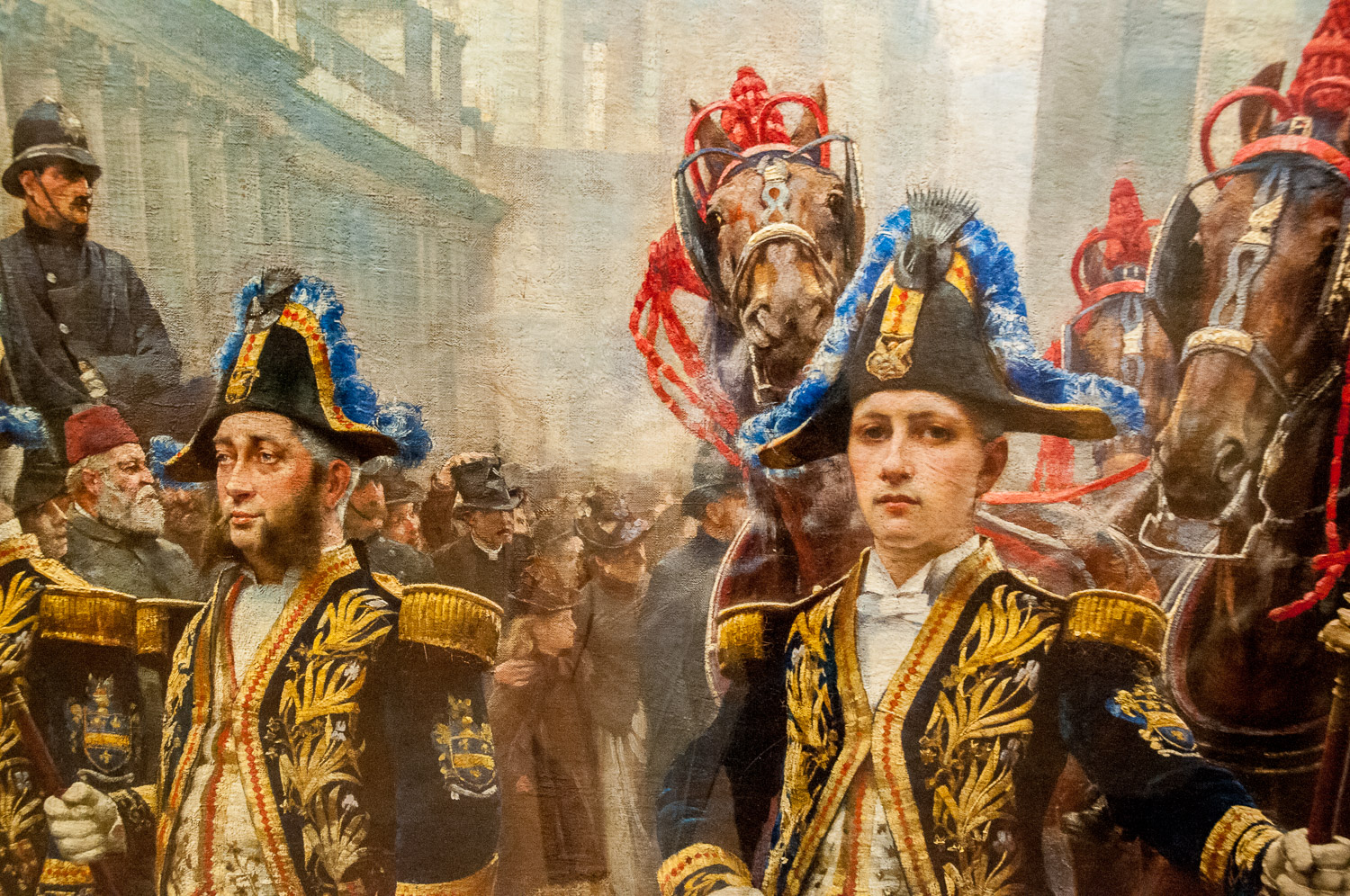
… and the people in the crowd …
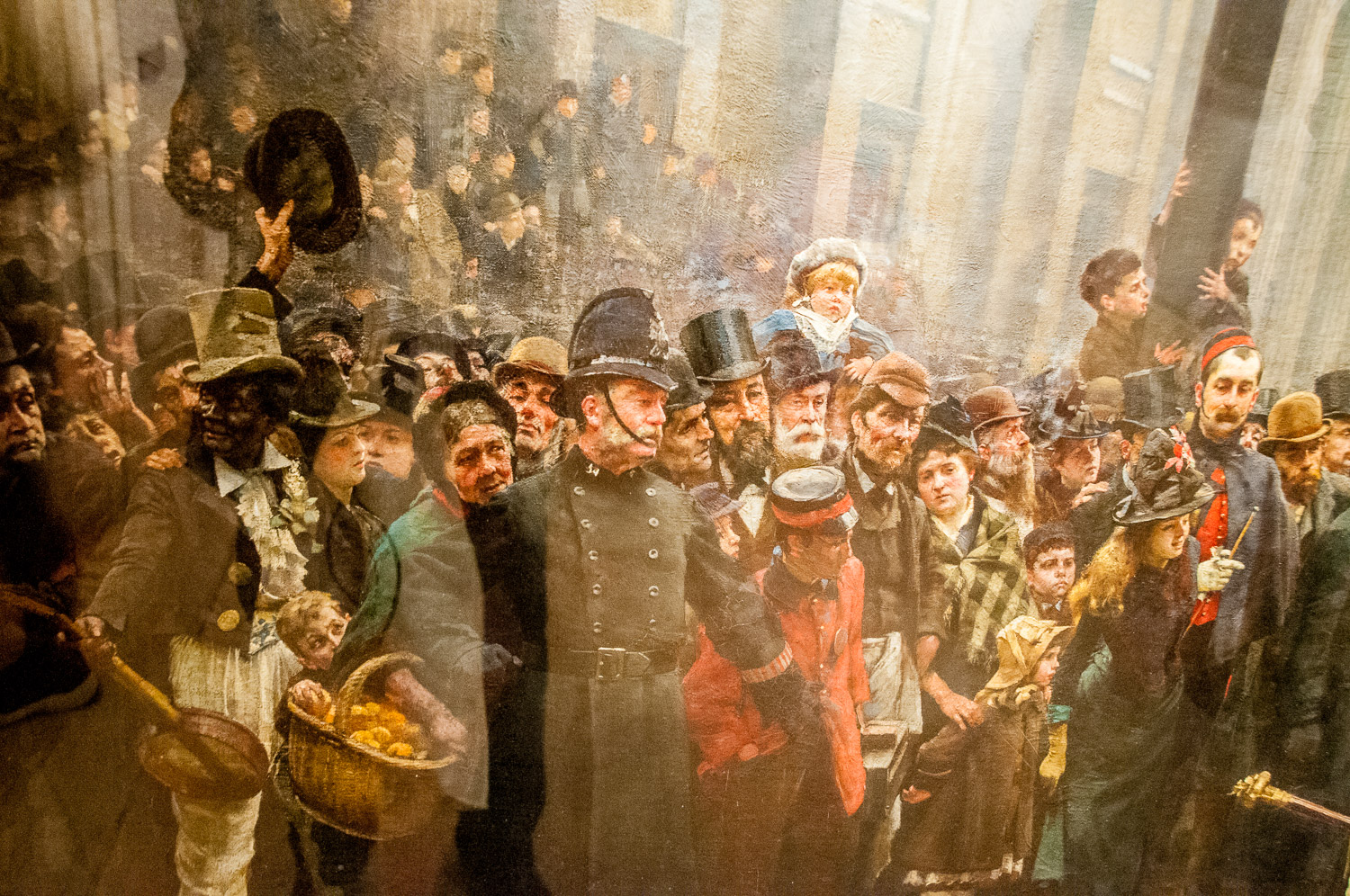
There is a minstrel in blackface with his banjo and, although I have studied this picture dozens of times, I have only just noticed the little boy next to him nicking an orange from the old lady’s basket. On the right of the picture the man in the brown hat, next to the soldier with the very pale face, is Logsdail’s friend the painter Sir James Whitehead. It’s a sobering thought that, not far away in the East End that afternoon, police were discovering the body of Mary Kelly, believed to be the last of Jack the Ripper’s victims.
Up the stairs at the far end of the gallery, in a space specially designed for it, you look down on the action-packed painting by John Singleton Copley: Defeat of the Floating Batteries at Gibraltar 1782 …
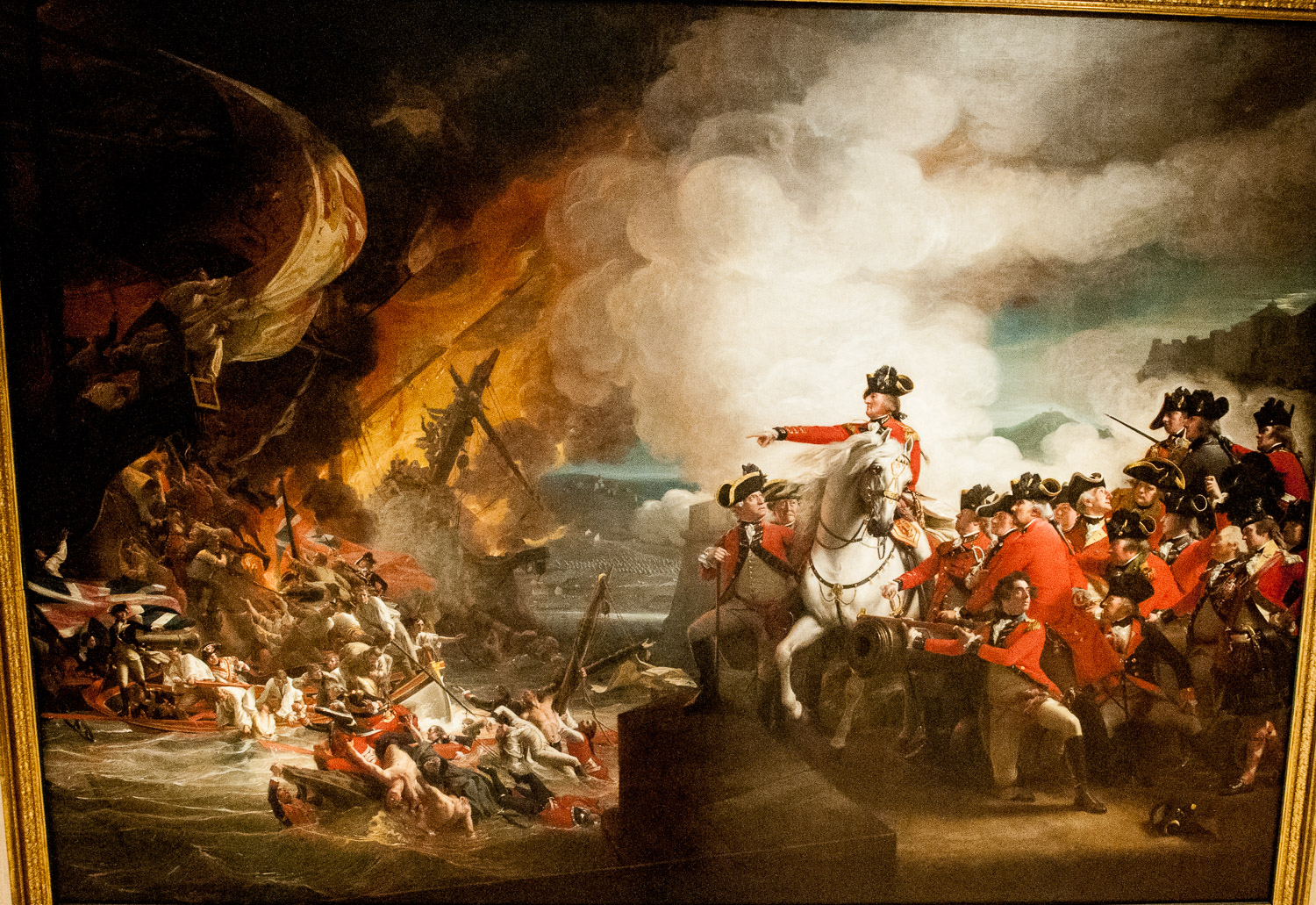
A Spanish attack on Gibraltar was foiled when the Spanish battering ships, also known as floating batteries, were attacked by the British using shot heated up to red hot temperatures (sailors nicknamed them ‘hot potatoes’). Fire spread among the Spanish vessels and, as the battle turned in Britain’s favour, an officer called Roger Curtis set out with gunboats on a brave rescue mission which saved almost 350 people.
Look at the painstaking detail in the faces of the officers and Governor General Augustus Eliot, who is portrayed riding to the edge of the battlements to direct the rescue …
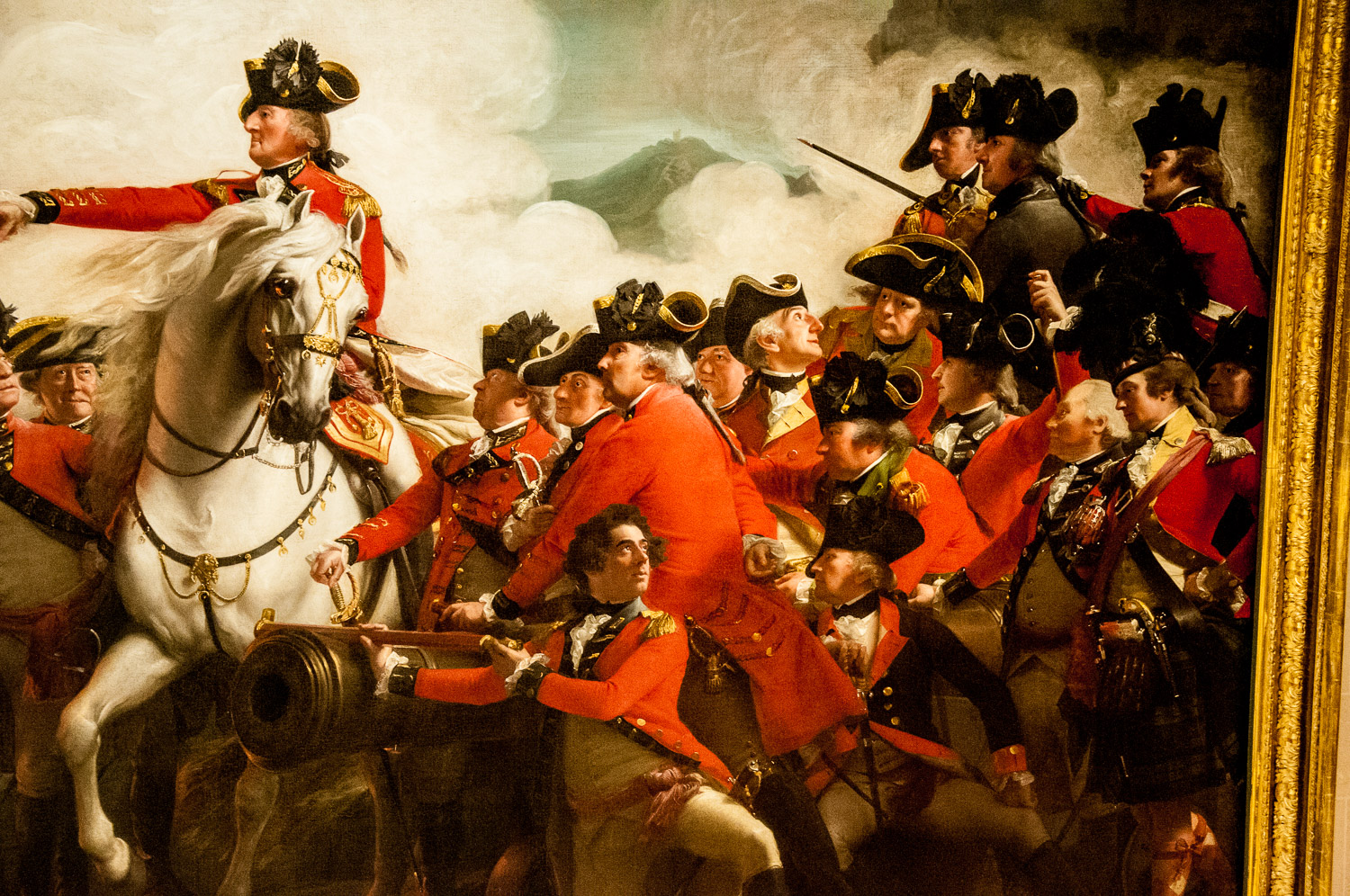
The officers were dispersed after the Gibraltar action and poor Copley had to travel all over Europe to track them down and paint them – a task that took him seven years at considerable expense. He recouped some of his cash in 1791 by exhibiting the picture in a tent in Green Park and charging people a shilling to see it (about £10 in today’s value).
Here is a facsimile of an admission ticket …
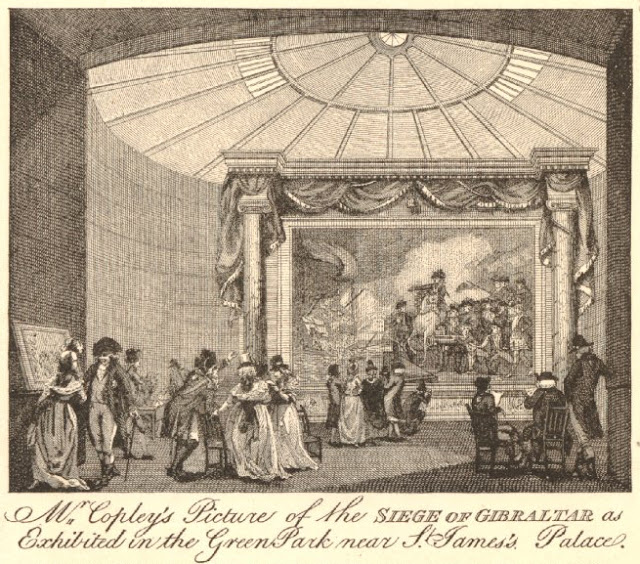
And now some more contemporary pieces of art.
In the entrance hall to the London Mithraeum at 12 Walbrook (EC4N 8AA) your eyes are drawn immediately to this stunning tapestry by Isabel Nolan: Another View from Nowhen …
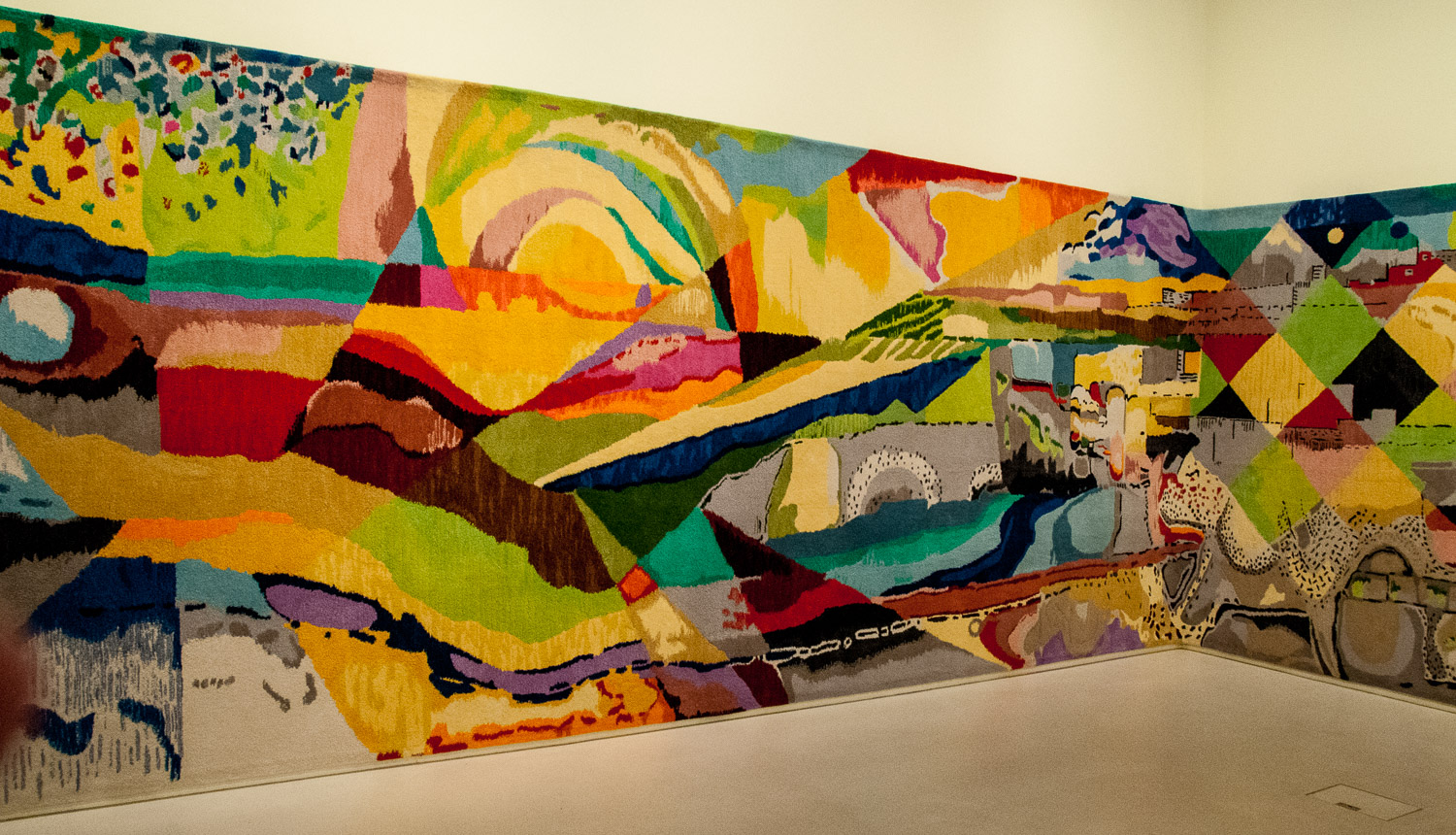
You can just pop in to look at the tapestry but I hope you will also book a time slot to go downstairs and visit the beautifully restored and exhibited Temple of Mithras. You can read all about it and see some pictures in my blog The Romans in London: Mithras, Walbrook and the Games.
In September 2017 Banksy paid a clandestine visit to the City to coincide with a retrospective of the work of American graffiti artist-turned-painter Jean-Michel Basquiat. The first work, a Ferris wheel with people queuing for tickets, is captioned as follows on Banksy’s website:
Major new Basquiat opens at the Barbican – a place that is normally very keen to clean any graffiti from its walls …
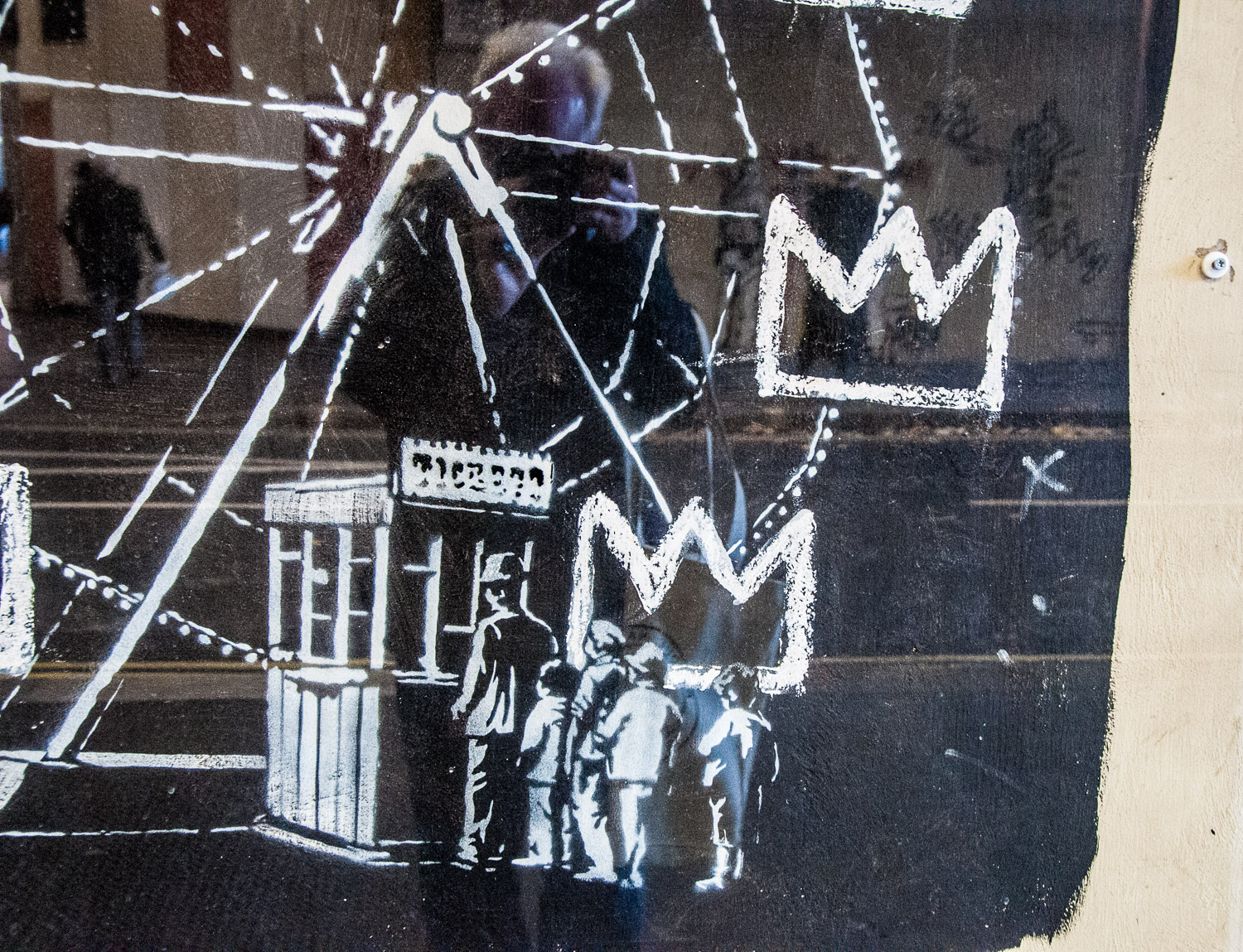
The three-pointed crown is a symbol often used in the artist’s own work.
The painting on the other side of the road references a Basquiat picture showing a New Yorker being searched by the police …
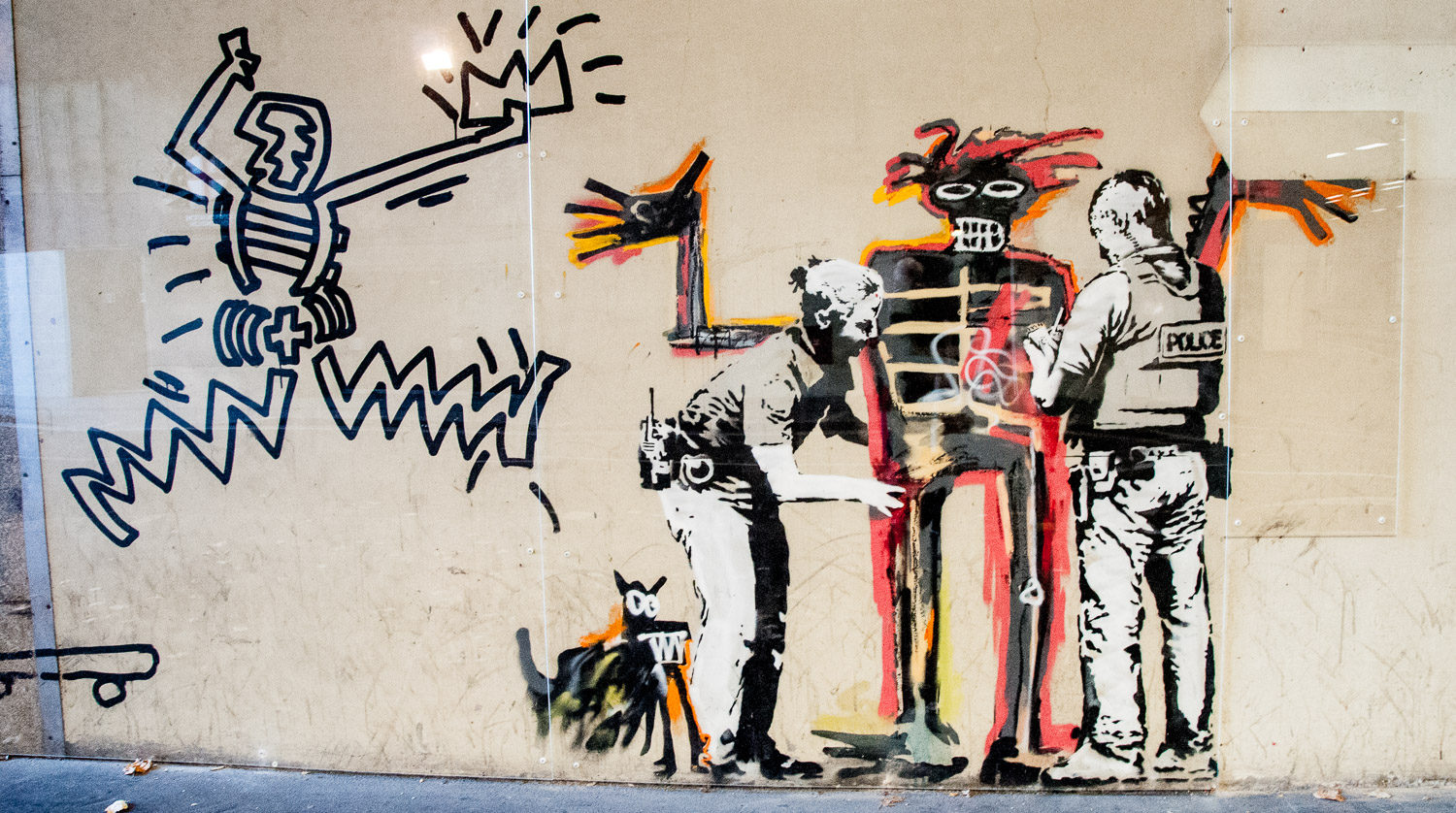
Steps have been taken to protect both paintings and you can see them at the junction of Beech Street and Golden Lane (EC1Y 0QT).
And finally, I often smile as I walk along Whitecross Street and see this jolly illustration of the street’s shops portrayed on street furniture …
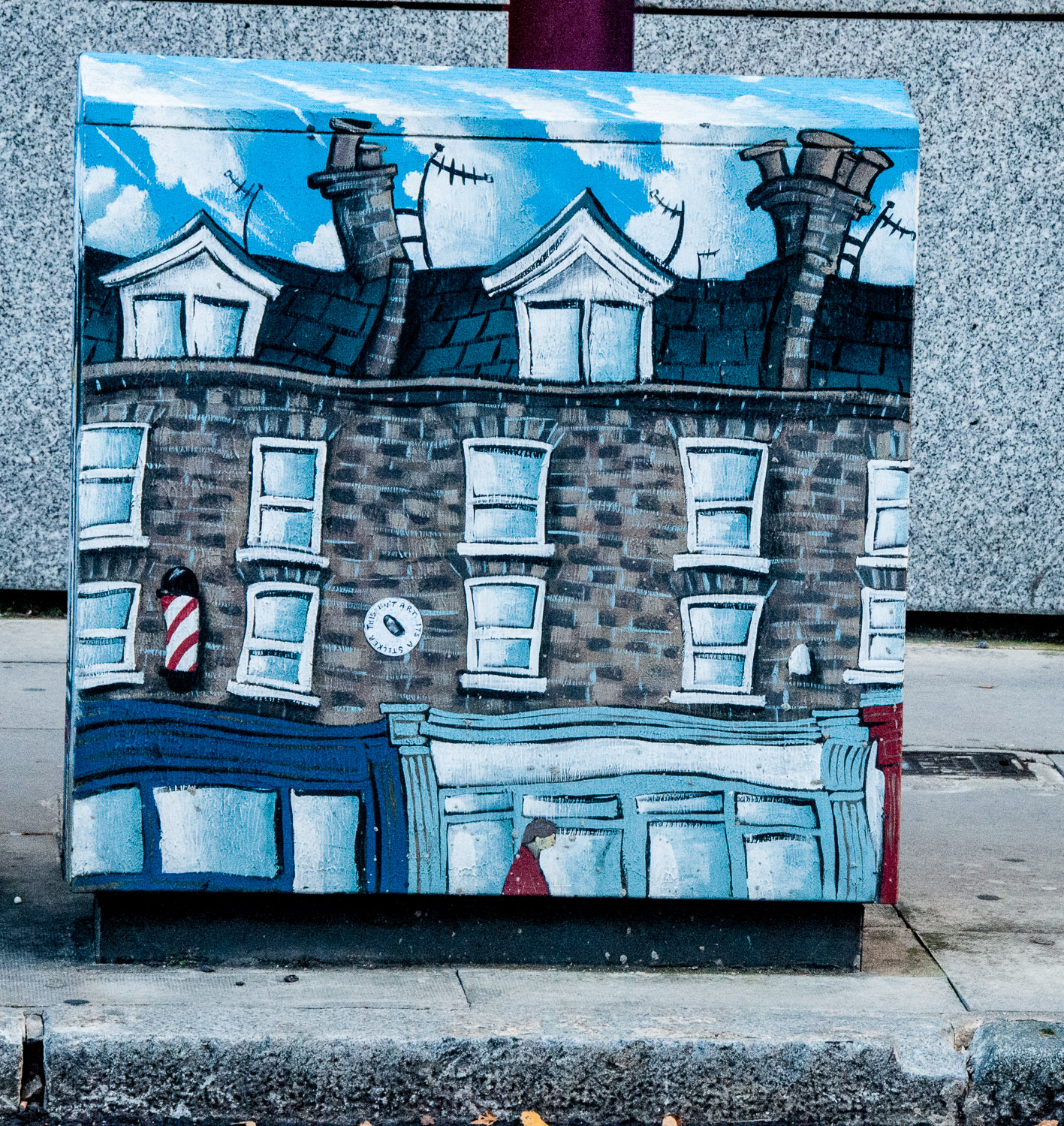
… along with this cheerful picture inviting you to nip around the corner and dine at the lovely, friendly Baracca Restaurant, highly recommended …

